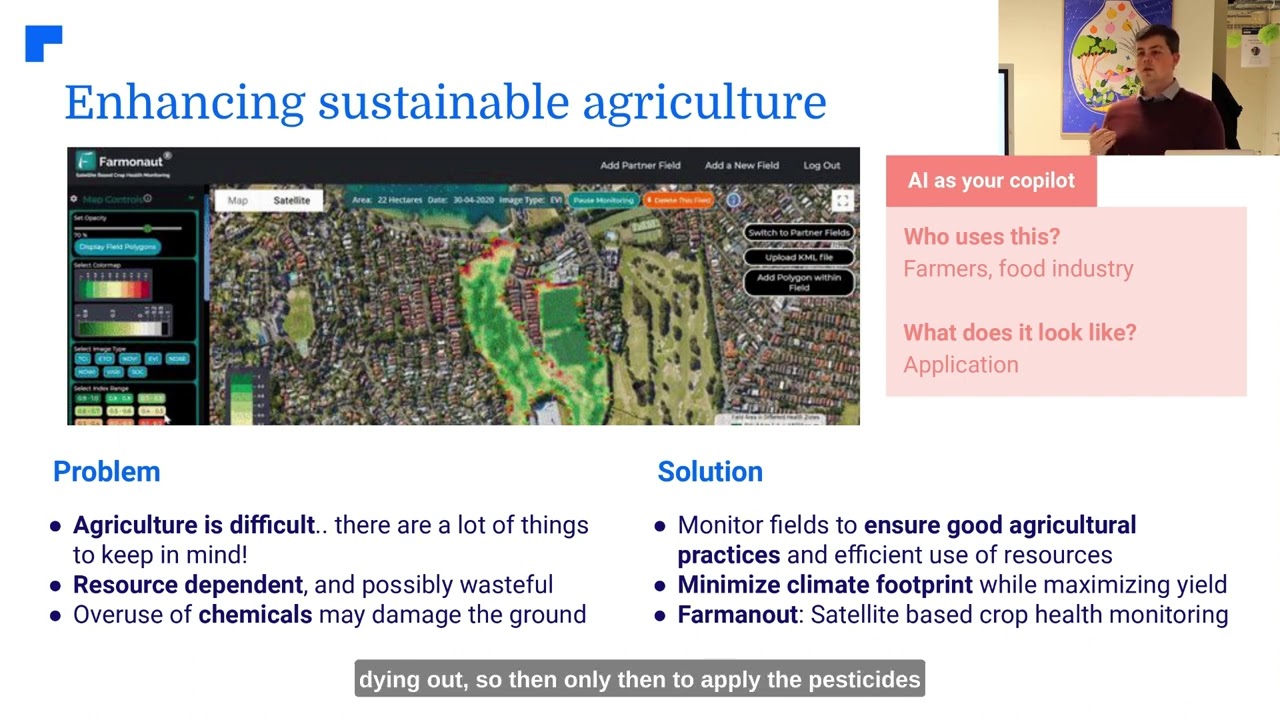“Over 90% of advanced military radar systems in 2025 will rely on rare earth elements for peak performance.”
Defense Applications of Rare Earths: A Critical Component of Modern Security in 2025
Rare earth elements (REEs) have emerged as the cornerstone in the development, enhancement, and sustainment of advanced defense technologies, bringing a paradigm shift in global security frameworks as of 2025. The unique chemical and electrochemical properties these 17 elements possess, including neodymium, dysprosium, and yttrium, make them indispensable components for modern defense systems.
In the defense context, rare earths are not mere materials—they are enablers of technological superiority, resilience, and national security. Their usage spans from missile guidance and stealth technology to electronic warfare and robotic platforms, positioning them as vital for 21st-century military competitiveness. As we move through 2025, safeguarding and innovating in rare earth supply, processing, and strategic deployment remain mission-critical for every technologically advanced nation.
Introduction: Defense Applications of Rare Earths and Their Impact on Modern Military Superiority
Defense Applications of Rare Earths now sit at the very heart of military technologies worldwide. But why are they so fundamental in 2025 and beyond? The answer lies in their unique magnetic, luminescent, and electrochemical properties, which are critical for the manufacturing of devices, components, and materials that deliver unmatched performance across combat, intelligence, and operational scenarios.
From the permanent magnets in missile and guidance systems, to the exotic coatings in stealth technologies, and the compact powerhouses inside electric vehicle motors, rare earths are central to the operational readiness and tactical advantage of modern armed forces.
The strategic importance, however, extends far past the battlefield. A secure, resilient supply chain for rare earths is now viewed as a core component of national security frameworks. As geopolitical tensions and technological competition intensify, nations are racing to innovate, diversify sources, and invest in recycling and advanced processing to ensure reliable access to these vital materials.
In this in-depth analysis, we explore the 7 key innovations that define the defense applications of rare earths in 2025—illustrating their impact on advanced systems, stealth, military superiority, and future defense strategies.
“Stealth technology innovations in 2025 use up to 17 different rare earth elements for enhanced invisibility and durability.”
Comparison Table: Rare Earth Elements and Their Defense Applications (2025)
To clarify the specific roles of each rare earth element in advanced defense technologies, below is a side-by-side comparison highlighting primary applications, example systems, and projected 2025 usage.
| Rare Earth Element | Primary Defense Application | Example Defense Systems | Estimated Strategic Importance | Projected 2025 Usage (%) |
|---|---|---|---|---|
| Neodymium (Nd) | High-performance permanent magnets | Missile guidance, aircraft avionics, radar, sonar | High | 38% |
| Dysprosium (Dy) | Magnet thermal stability, electric motors | UAV/robotic propulsion, radar, stealth coatings | High | 24% |
| Samarium (Sm) | Heat-resistant magnets, targeting systems | Missile components, jamming/ECM, lasers | Medium | 12% |
| Yttrium (Y) | High-temperature alloys, phosphors, lasers | Stealth coatings, night vision, communication modules | High | 9% |
| Terbium (Tb) | Magnet performance booster, electronic devices | Radar systems, UAV motors, communication filters | Medium | 8% |
| Gadolinium (Gd) | Radar absorption, specialized optics | Sonar, stealth coatings, mine detection optics | Medium | 5% |
| Europium (Eu) | Phosphors for display and night vision | Night vision goggles, advanced heads-up displays | Medium | 4% |
The 7 Key Defense Applications of Rare Earths in 2025
1. Exceptional Magnets: Missile Guidance, Avionics, and Systems Control
Permanent magnets, particularly those based on neodymium-iron-boron (NdFeB) and samarium-cobalt (SmCo), have become the backbone of modern defense equipment. These magnets, enabled by rare earth elements, provide unmatched magnetic strength, thermal stability, and miniaturization crucial for military superiority.
- Missile Guidance Systems: High-precision magnets deliver accurate and rapid targeting. In 2025, nearly all precision-guided munitions rely on them for stabilization and targeting, directly supporting national security missions.
- Aircraft Avionics & Navigation: These magnets are central to inertial navigation systems, radar actuators, and control surfaces of fighter jets and stealth aircraft.
- Radar and Sonar: The high-frequency, sensitive detection and early threat awareness offered by today’s defense radar systems is powered by rare earth magnetics, providing critical information for combat decision-making.
- Robotic and Autonomous Platforms: NdFeB and SmCo magnets are fundamental in motors for unmanned platforms, drones, and robotic vehicles, where both torque and energy efficiency dictate operational range and effectiveness.
Just as every strong shield relies on its alloy, every advanced military system of 2025 is enhanced by rare earth magnets.

Access real-time monitoring of critical assets with the Farmonaut platform via web or mobile app for strategic defense intelligence.
2. Stealth Technology: Radar Absorption, Signature Reduction, and Tactical Superiority
Stealth technologies are one of the most strategic applications of rare earth elements. By leveraging compounds and alloys that absorb, deflect, or dissipate radar signals, these materials drastically reduce the radar cross-section of aircraft, naval vessels, and ground vehicles.
- Material Coatings: Advanced yttrium-based ceramics, gadolinium compounds, and dysprosium alloys are applied to external surfaces, ensuring both durability and radar evasion.
- Electromagnetic Absorption: Gadolinium and terbium are key in the development of materials with exceptional electromagnetic absorption properties, further improving stealth performance under active radar threat scenarios.
- Heat and Environmental Protection: Yttrium oxides are also critical in providing thermal barrier coatings, enabling next-generation platforms to withstand extreme operational environments while remaining hidden from enemy sensors.
- Survivability and Mission Success: By evading detection, these innovations directly contribute to tactical advantage and mission survivability in competitive global theaters.
As of 2025, it’s common for stealth technology to use up to 17 different rare earths, maximizing both invisibility and durability.
Traceability is vital in securing the rare earth supply chain. Our blockchain-based traceability solution brings transparency, authenticity, and fraud prevention to critical and defense material flows from source to system.
3. Night Vision & Optical Devices: Enhancing Visibility and Operational Awareness
Optical devices equipped with rare earth phosphors and specialized glasses have been transformative for modern defense operations—especially for nighttime missions and low-light environments where seeing first means surviving and winning.
- Night Vision Goggles & Scopes: Elements like europium and yttrium are fundamental to the phosphors that produce the crisp, green-hued visibility found in next-gen night vision goggles (NVGs). This technology delivers a strategic edge in both urban and rural combat scenarios.
- Advanced Heads-Up Displays: Rare earth-based screens enhance contrast and sharpness, increasing decision accuracy and soldier survivability in fast-moving operational conditions.
- Optical Sighting and Target Acquisition: Samarium and gadolinium improve specialty glass and sensor materials, boosting targeting system performance under diverse lighting and environmental conditions.
With rare earth enhancements, military optical devices in 2025 are raising the standard for threat detection, operational coordination, and mission success.
For real-time field insights, mission-critical intelligence, and environmental monitoring, download our dedicated satellite-powered apps:


4. Electric Propulsion: Powering Military Vehicles, UAVs & Robotic Platforms
Rare earth-enhanced electric propulsion systems have revolutionized the performance and energy efficiency of military vehicles, unmanned aerial vehicles (UAVs), and autonomous platforms.
- Dysprosium and Terbium: By infusing these rare earths into permanent magnets, military engineers have improved torque, heat resistance, and operational range for vehicles in harsh environments.
- Silent and Stealth Operations: Rare earth-based electric motors run quietly and efficiently, enhancing the stealth and longevity of robotic systems and drones in both urban and wilderness theaters.
- Scaling Up Autonomous Systems: The demand for rare earths in propulsion supports the rapid expansion of autonomous surveillance, reconnaissance, and strike capabilities in 2025.
The quiet propulsion and reliable maneuvering of military drones owe their existence to the power of rare earth magnets.
Our fleet management tools optimize defense logistics, tracking vehicle movements, and ensuring efficient deployment in conjunction with advanced resource management capabilities for military and government fleets.
5. Electronic Warfare & Secure Comms: Miniaturization and Signal Dominance
Electronic warfare (EW) and secure communication systems represent an ever-expanding field where rare earth elements play a pivotal role:
- Miniaturized Capacitors & Filters: Yttrium and gadolinium are used in developing high-frequency components, enabling secure, reliable, and encrypted communications for modern military command structures.
- Laser Systems & Target Tracking: Yttrium-aluminum-garnet (YAG) lasers are central to advanced targeting, rangefinding, and countermeasure systems, supporting information dominance in both offensive and defensive EW scenarios.
- Electronic Countermeasures (ECM): Rare earths improve the resilience and operational reliability of EW systems designed to detect, disrupt, and neutralize hostile signals on the electronic battlefield.
With rare earth-powered miniaturization, military forces in 2025 maintain information superiority—often the decisive factor in the outcome of modern conflicts.
Integrate real-time satellite intelligence into your defense or security enterprise via our API and developer documentation. Custom solutions are available for government and advanced research teams!
6. Directed Energy Weapons (DEWs) and Advanced Laser Systems
Directed energy weapons and advanced laser systems are revolutionizing defense capabilities in 2025, with rare earths again at the heart of these innovations:
- Laser-Active Materials: Yttrium, neodymium, and samarium play a vital role in the crystals, ceramics, and gain media for laser beam generation, amplification, and targeting.
- Portable Laser Platforms: Rare earth doping increases energy efficiency and system compactness, making handheld and vehicle-mounted lasers viable for tactical operations.
- Countermeasure and Anti-Drone Weapons: Rare earth-based lasers are key in defending against UAVs and swarms, providing scalable, rapid, and cost-effective neutralization compared to conventional munitions.
Globally, militaries are investing in rare earth-enabled DEWs for both defending critical infrastructure and projection of strategic power against evolving threats.
Monitor and mitigate the environmental impact of defense operations with our carbon footprinting tools—supporting sustainable strategy, compliance, and ESG initiatives.
7. Strategic Supply, Recycling, and National Security Frameworks
The defense applications of rare earths are as dependent on strategic sourcing as they are on technology innovation. In 2025, the supply chain for rare earth elements remains heavily concentrated and subject to geopolitical risk, making security of supply, advanced recycling, and domestic processing a matter of national and global security.
- Supply Chain Resilience: With over 80% of rare earth processing taking place in a handful of countries, defense planners aggressively diversify sourcing, invest in domestic mining and processing, and fund research into alternative materials.
- Advanced Recycling Technologies: 2025 marks a turning point in the circular economy of defense materials. Sophisticated recycling methods enable the recovery of rare earths from obsolete electronics, scrapped vehicles, and end-of-life military hardware.
- Sustainability and ESG Compliance: Environmental, social, and governance (ESG) frameworks are now intrinsic to defense procurement, making responsible rare earth management an operational as well as societal imperative.
As international competition accelerates, control, security, and sustainability of rare earth supply chains have never been more critical to modern security planning.
Our crop loan and insurance services, originally developed for agriculture, are now being adopted for defense material asset insurance and supply chain risk mitigation—delivering transparency, fraud prevention, and rapid claims verification via satellite.
How Farmonaut Adds Value to Defense Intelligence & Strategy Using Satellite Technologies
At Farmonaut, we recognize that satellite-driven insights are revolutionizing both the monitoring and strategic planning of defense applications of rare earths. Here’s how our platform empowers defense stakeholders:
- Satellite-Based Monitoring: We provide real-time, multispectral imagery for monitoring mining sites, supply chains, and even sensitive infrastructure related to rare earth material flows—supporting informed resource management decisions.
- AI-Powered Analytics: Our Jeevn AI Advisory System analyzes massive datasets to predict material supply disruptions, recommend alternative sourcing strategies, and offer operational insights for defense planners.
- Blockchain Traceability: We enable transparent, secure traceability for rare earth materials, helping defense authorities maintain control and authenticity across the entire value chain.
- Fleet and Resource Management: Our tools allow militaries and government agencies to optimize logistics and equipment usage for rare earth mining and critical component transportation.
- Environmental & ESG Compliance: We provide environmental impact tracking, ensuring compliance and supporting sustainability initiatives for defense and government users.
- Resource Verification: Integration of our platform with financial and insurance sectors ensures secure, satellite-based verification of high-value resources—minimizing operational risk across defense asset management workflows.
Our mission is to make satellite-driven data and AI advice both affordable and accessible—delivering advanced situational awareness for resource allocation, supply security, and national defense strategy.
Explore large-scale asset and resource management via our satellite platform—optimized for defense, infrastructure, and strategic project management with secure oversight and AI-powered reporting.
FAQ: Defense Applications of Rare Earths in 2025
What are rare earth elements and why are they “critical” for defense?
Rare earth elements are a group of 17 chemical elements with unique magnetic, luminescent, and electrochemical properties. They are critical to defense because they empower the advanced performance, miniaturization, stealth, and efficiency found in modern military devices, guidance systems, stealth coatings, radar, and electronic warfare platforms.
Which defense technologies rely most on rare earths in 2025?
The most reliant sectors are missile guidance, advanced avionics, radar/sonar, stealth technology, night vision and optical devices, electric propulsion for drones and military vehicles, and electronic warfare.
Why are supply and recycling frameworks so important now?
The global supply chain for rare earths is geographically concentrated and highly strategic. Increasing demand and potential geopolitical risk make supply security and advanced recycling essential elements of both operational defense and resilient national policy.
How does Farmonaut support defense strategies using these insights?
We deliver satellite data, AI insights, blockchain traceability, and fleet/resource management tools to defense stakeholders—improving monitoring, supply chain security, and operational planning for rare earths and critical material programs.
Can rare earths be replaced or substituted in defense systems?
Currently, no direct substitutes match the unique combination of properties provided by rare earths in technologies like high-powered magnets, lasers, and stealth coatings. Research is ongoing, but rare earths remain irreplaceable in many mission-critical applications for 2025 and the foreseeable future.
Conclusion: The Strategic Imperative of Rare Earths in Defense (2025)
Rare earth elements have emerged as the bedrock of modern military superiority, powering everything from missile systems and stealth aircraft to electronic warfare capabilities and autonomous platforms. Their unique characteristics—magnetic, luminescent, and electrochemical—make them irreplaceable enablers of next-generation defense technologies.
In 2025 and beyond, every aspect of national defense, security frameworks, and tactical innovation will remain deeply intertwined with the supply, processing, and recycling of rare earth materials. Nations that invest in strategic autonomy, supply chain resilience, and technological advancement will sustain the competitive edge needed for operational and strategic security in the years ahead.
Farmonaut stands ready to provide the satellite intelligence, AI advisory, traceability, and resource management tools required for both public and private stakeholders to thrive in a defense landscape shaped by rare earth innovation.
Farmonaut Subscription Options
Empower your defense strategies with satellite-powered intelligence and innovation from Farmonaut—secure, accessible, and future-ready for 2025 and beyond.









